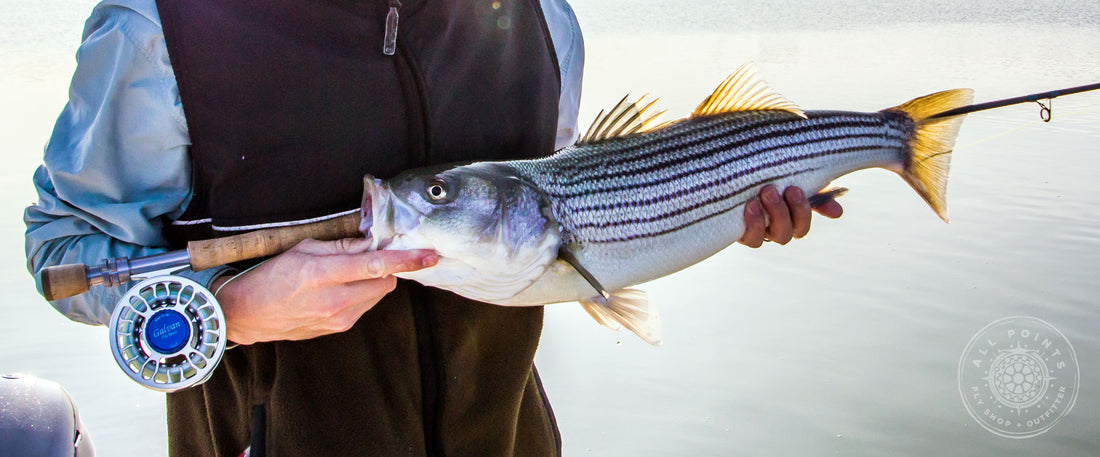
8wt or 9wt For Striped Bass?
Share
This is a common question that I get a lot in the shop, via email/chat, or on the phone. It makes a lot of sense, as there is a fair amount of confusion surrounding saltwater fishing in Maine and the northeast. Questions regarding which types of lines are most effective, do you need a sealed drag, what pound tippet/leaders, etc. etc. But this is by far the most reoccurring question. So here is what I will usually say:
If a customer walks in and explains that they already have an 8wt because they go bonefishing in the winter, target redfish in Florida, or have one for salmon, then I will tell them there is no need to purchase another rod. The 8wt will make do. But, ideally the 9wt is the way to go. For "New England Saltwater Fly Fishing" for the big three - Stripers, Bluefish, False Albacore - here is why the 9wt makes the most sense...(this is specifically only considering single-handed rods)
- Lifting Power - This is exemplified while targeting false albies, but holds true for stripers just the same. The smallest, generally speaking pound-wise, of the "big three" is the false albie. But when those guys sound deeply, you need the lifting power of a 9wt. Ask 10 albie guides and 9 will recommend bringing a 9wt.
- Bigger Fish - Stripers get big! If you are lucky enough to hook into a 30" or more bass, having a rod with the fighting power to negotiate these strong fish is really ideal. The fight is the best part, but you also want to get that fish in quickly. This cuts down on the possibility of losing the fish and also bringing it to hand in a healthy manner so you can release it without killing it from exhaustion.
- Wind - There is no getting away from the wind on the ocean in New England. Most days on the water you will have to be dealing with wind, and a lot of the time it can really effect your cast. The added strength of a 9wt will give your rod the ability to not be as manipulated by the wind.
- Heavier Flies - Most fly tyers designing and tying flies for striped bass and bluefish (false albie flies are usually small) are doing so with the desire to keep them light and manageable. When I am tying deceivers specifically, I try to tie them sparsely and easily capable of shedding water so they are castable, especially all day long. But heavy crab patterns and clousers are also extremely popular and effective. In much the same way anglers like to use a 9 or even 10wt for Permit solely to help cast the heavier crabs, this is true for the heavy flies we use here in New England. Can an 8wt cast a lot of these? Yes. But it's much easier on a 9wt.
- Waves and Current - When fishing for stripers in heavy current/tidal areas like rivers/mouths of rivers, and in heavy surf such as off the rocks, these water conditions can put significant added pressure during the fight. It is much different than fighting them on the flats. After hooking a good sized striper and having it run down current, it can be very difficult to turn its head. They certainly have the advantage here. Also, when fishing off of ledges, large rolling waves can also make it difficult to land fish. The 9wt gives you just that much added fighting power.
- Heavier Lines - For those that like to fish crab patterns or clousers/baitfish along the bottom, the sinking line is the most effect line to use. The heavier the sinking line, the faster and more efficiently it sinks. For example - a popular setup for those searching along the bottom, is to use Rio's InTouch Level T sinking tips. They are tungsten tips that sink extremely well. The T-11 sinks at 7-8ips, the T-14 at 8-9ips, the T-17 at 9-10ips, and so on.
I hope that helps! If you have any other questions, shoot me an email: josh@allpointsflyfishing.com
Written by: Josh Thelin



1 comment
What if you were looking at two handed surf rods for overhead casting an Outbound Short or the like?